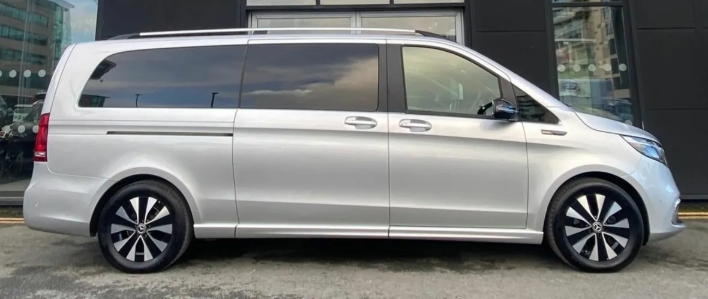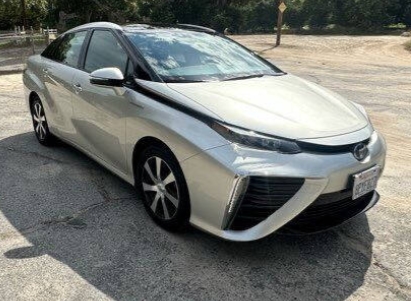The Iron Lion Roars: Tracing the Enduring Evolution of the Volvo PV444
In the annals of automotive history, few cars possess the enduring charm and sheer resilience of the Volvo PV444. More than just a vehicle, it became a symbol of Swedish post-war optimism, a testament to robust engineering, and a surprisingly adaptable platform that defied its initial humble origins. From its stark, utilitarian beginnings to its more refined later iterations, the PV444’s journey is a fascinating narrative of automotive evolution, marked by consistent refinement, a commitment to safety, and an unwavering appeal that cemented its place as an icon.
The story of the PV444 begins in the shadow of World War II. With global conflict disrupting production lines and straining resources, Volvo, like many manufacturers, found itself at a crossroads. The company recognized the urgent need for a new, affordable, and robust car that could meet the demands of a rebuilding society. This necessity birthed the “Project 444,” a name derived from the projected price (400 Swedish Kronor), the number of cylinders, and the number of doors. However, the final production price settled around 8,000 Kronor, still a significant but achievable sum for many Swedes.
Birth of a Legend: The PV444 Takes the Stage (1947-1958)
The Volvo PV444 made its grand debut in September 1947, generating immense excitement. Its design, influenced by American styling trends of the era with its rounded, bulbous shape and prominent grille, was a stark contrast to the more angular European designs prevalent at the time. This distinctive “Roaring Twenties” or “American” look, as it was sometimes colloquially known, gave the PV444 a unique personality.
Underneath its charming exterior lay a chassis that was remarkably robust, designed for durability and ease of maintenance – crucial factors in the post-war era. The initial model, officially designated the PV444A, was powered by a 1.4-liter, four-cylinder overhead valve engine producing a modest 40 horsepower. This engine, code-named B4B, was coupled to a three-speed manual transmission. While not a speed demon, it was dependable and capable of the speeds required for the roads of the time.
The PV444 was not just about basic transportation; Volvo, even in its early days, harbored a strong commitment to safety. The car featured a strong, unitary body construction, a revolutionary concept for its time that offered superior rigidity and crash protection compared to body-on-frame designs. It also boasted a padded dashboard and a laminated safety glass windscreen, innovations that were becoming standard in the evolving automotive landscape.
.
THIS could come in handy for your auto garage (and everywhere else!):

.
Early Model Variations and Refinements:
While the core design remained remarkably consistent throughout its production life, Volvo introduced incremental improvements and variations that marked the PV444’s evolution.
- PV444B (1949): This early iteration saw minor updates, including some interior trim adjustments and a revised carburetor for slightly improved performance. The focus remained on reliability and affordability.
- PV444C (1950): A more significant update arrived with the PV444C. The most notable change was the introduction of a taller, more upright grille, giving the car a slightly more imposing presence. The engine also received a power boost to 44 horsepower. Crucially, 1950 also saw the introduction of the PV444D, which featured a split windscreen, a design element that would become a hallmark of the early PV444. The split windscreen offered improved visibility and was a practical solution for the manufacturing limitations of the time.
- PV444E (1952): This model saw further enhancements to the B4B engine, increasing its output to 45 horsepower. Minor interior and exterior trim changes continued to refine the car.
- PV444F (1953): The engine received another tune-up, pushing its output to 50 horsepower. This was a welcome improvement for drivers seeking a bit more oomph. The PV444F also featured a revised dashboard layout and improved upholstery options.
The Advent of the PV445 and the Duett Legacy:
While the PV444 sedan was the primary focus, Volvo also recognized the need for a versatile commercial vehicle. This led to the development of the PV445, which shared the PV444’s chassis and much of its mechanical DNA but featured a more utilitarian body. Launched in 1949, the PV445 was initially offered as a chassis for custom bodywork, catering to businesses needing vans, pickups, and light trucks.
However, the most enduring variant of the PV445 was the Volvo Duett. Introduced in 1953, the Duett was a two-door station wagon built on the PV445 chassis. It was designed to be a versatile vehicle, capable of carrying both passengers and cargo, making it ideal for families and small businesses alike. The Duett’s robust construction and practical design quickly made it a popular choice, and its lineage can be traced to Volvo’s later successful wagon models. The Duett was essentially a commercial vehicle designed with a secondary passenger-carrying capability, reflecting the needs of the era.
The PV444 Matures: The “Humpback” Evolves (1954-1958):
The mid-1950s saw the PV444 undergo more significant evolutionary steps, leading to the models that are often considered the most desirable.
- PV444G (1955): This year marked a significant milestone. The PV444 received a more powerful engine, the new 1.6-liter B40, which produced a healthy 50 horsepower. While the exterior styling remained largely the same, the interior saw substantial upgrades, including a more modern dashboard and improved seating. This model also saw the introduction of optional two-tone paint schemes, adding a touch of flair.
- PV444H (1956): The engine received another boost, now producing 60 horsepower. This was a considerable improvement, making the PV444 a more engaging car to drive. The interior continued to be refined, with better quality materials and a more comfortable driving position.
- PV444K (1957): Minor cosmetic updates continued, with subtle changes to trim and badging. The engine remained the 1.6-liter unit, still offering 60 horsepower.
- PV444L (1958): This was the final iteration of the PV444. It largely carried over the specifications of the PV444K, with the 1.6-liter engine as standard. Production of the PV444 officially ceased in 1958, after an impressive 11-year run.
The Rise of the PV544: A New Era for an Old Favorite (1958-1965)
While the PV444 bowed out in 1958, its story was far from over. Volvo, recognizing the enduring appeal of its “humpback” design, introduced its successor, the Volvo PV544. The PV544 was essentially an evolution of the PV444, retaining the iconic silhouette but incorporating a host of modernizations and safety features.
The most significant change in the PV544 was the introduction of a single-piece curved windscreen, replacing the earlier split design. This dramatically improved forward visibility and gave the car a more contemporary feel. The interior also received a substantial overhaul, with a more modern dashboard, improved instrumentation, and better seats.
Under the hood, the PV544 was equipped with Volvo’s new 1.8-liter B18 engine, known for its reliability and performance. This engine, initially producing 70 horsepower and later upgraded to 90 horsepower, provided a significant performance boost over its predecessor. The PV544 also benefited from a more robust four-speed fully synchronized gearbox, enhancing the driving experience.
Crucially, the PV544 continued Volvo’s commitment to safety. It featured improved braking systems, a collapsible steering column, and a reinforced passenger cell. The introduction of seatbelts, initially as an option and later as standard, further cemented Volvo’s reputation as a safety pioneer.
PV544 Models and Trim Levels:
The PV544 also saw a range of models and trim levels emerge throughout its production:
- PV544 (Standard): The base model offered the essential PV544 experience with the 1.8-liter engine.
- PV544 Special 1 (1960): This performance-oriented model featured a higher compression ratio and dual carburetors, boosting the engine’s output to 90 horsepower. It also came with sportier trim and often benefitted from disc brakes on the front.
- PV544 Special 2 (1961): Further refinements to the Special models.
- PV544 Sport (1962): This was a further evolution of the Special models, continuing the trend of enhanced performance and sportier styling, often with upgraded interiors.
- PV544GL (1965): The final iteration, often referred to as the “GL” model, continued to offer the potent B18 engine and retained the classic PV544 styling.
The PV544 continued production until October 1965, marking the end of an era for Volvo’s beloved “humpback” design. In total, over 440,000 PV444s and PV544s were produced, a testament to their enduring appeal and practical design.
The Enduring Legacy:
The Volvo PV444 and its successor, the PV544, are more than just vintage cars; they represent a pivotal moment in Volvo’s history and the broader automotive landscape. They demonstrated that a car could be both affordable and exceptionally well-built, safe and stylish, and practical for everyday use.
Their robust construction meant that many PV444s and PV544s have survived the decades, finding new life as cherished classics. Their distinctive styling continues to evoke nostalgia and admiration, while their inherent reliability makes them surprisingly practical for regular use.
The PV444’s evolution from a basic, post-war necessity to a more refined and powerful machine, culminating in the iconic PV544, showcases Volvo’s commitment to continuous improvement and its unwavering focus on the core values of safety, durability, and practicality. The “Iron Lion,” as it was sometimes affectionately called, may have roared its last production year in 1965, but its legacy continues to resonate, a timeless reminder of automotive excellence and enduring design.







